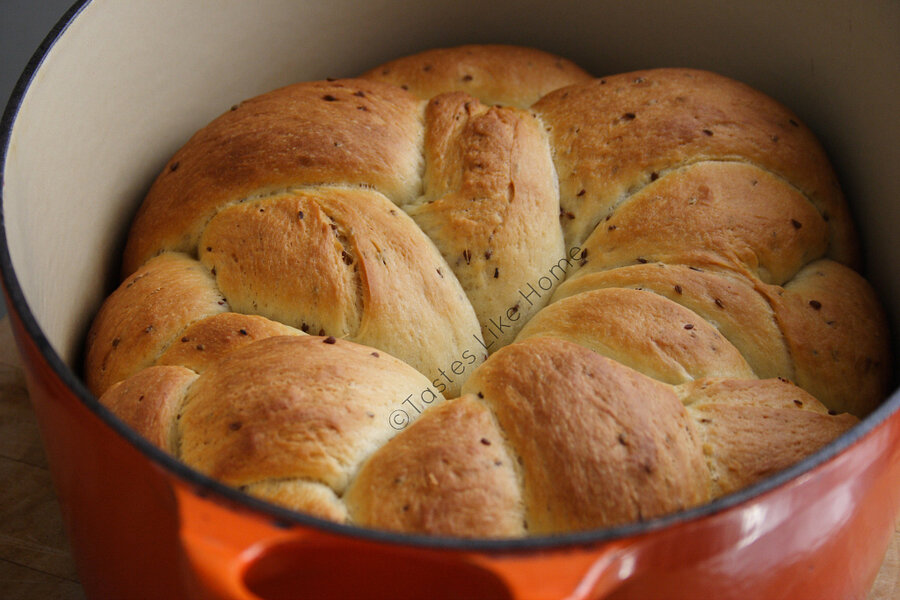Anise-seed bread
Loading...
I generally make two versions of Anise-seed bread. One that requires double proofing and that can be baked in a regular loaf pan or a sheet pan. With the double-proof bread, I also brush the bread when it is just finished baking with a homemade orange syrup and dust it with castor sugar. It is the kind of bread that you can eat just as-is.
This second version of the bread I am featuring is more of the hearty kind. It requires almost no proofing and can be ready in under 90 minutes. For this bread, you will need a 5- or 6-quart oven proof bowl or dish with a cover or a cast iron pot with a lid will do. If you don't have either, you can still make the bread. Use a deep dish and use foil to cover it.
At Christmas, Guyanese make a dish called Pepperpot and to accompany it, homemade bread is a must. You want the bread to be hearty, solid and something that you can pull apart, tear at. No dainty slicing here. While a regular white bread works very well, having Pepperpot with anise-seed bread to soak up that dark, velvety, liquid black gold is a something to be thankful for. The combination of spice flavorings from the Pepperpot marry well with the anise-seed.
If you're Guyanese, I know that you still have Pepperpot leftover from Christmas or New Year's, so have at it and make some anise-seed bread.
Anise-seed bread
3-1/2 cups all-purpose flour, plus extra for work surface
3 teaspoons instant yeast
1/4 cup sugar
1/4 teaspoon fine table salt
1 tablespoon anise seeds
3 ounces vegetable shortening
1 cup whole milk (you may need more or less depending on your location)
1. Mix together the flour, yeast, sugar and salt. Set aside.
2. Add the shortening, anise-seed and milk to a small saucepan and heat gently to melt the shortening. Remove from the heat and let the mixture cool to 115 degrees F. This process helps to infuse the milk mixture with the anise-seed.
3. Pour the milk-shortening into the flour and mix to form a dough. Turn the dough on to a floured work surface and knead for 12 minutes. If using a mixer, use the dough hook and mix for 10 minutes.
4. Shape dough however you like. For this bread, I braided the dough, and formed it into a circle then transferred it to the pot.
5. Cover the pot/dish and leave in a warm place for 20 minutes. If you have a gas stove that has a pilot, then that is warm enough, just place the pot/dish in the oven.
6. If you had the dough resting outside of the oven, at the end of the 20 minutes, transfer it to the cold oven and turn the oven on to 400 degrees F. Set the timer for 40 minutes. At the end of the 40 minutes, remove the cover of the pot/dish so that the top of the bread can brown nicely. Bake uncovered for 5 minutes then remove from the oven.
7. Wait for 5 minutes then carefully remove the bread and place on a wire rack to cool.








